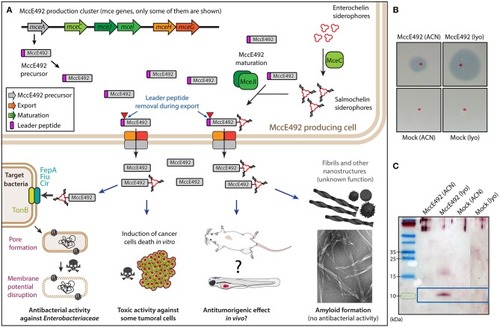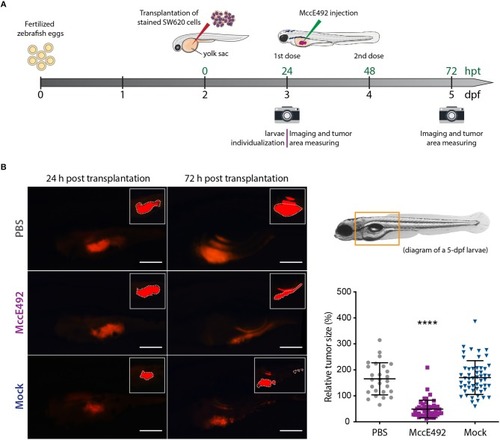- Title
-
Exploiting Zebrafish Xenografts for Testing the in vivo Antitumorigenic Activity of Microcin E492 Against Human Colorectal Cancer Cells
- Authors
- Varas, M.A., Muñoz-Montecinos, C., Kallens, V., Simon, V., Allende, M.L., Marcoleta, A.E., Lagos, R.
- Source
- Full text @ Front Microbiol
|
|
|
Microcin E492 induces cytotoxicity over human colorectal cancer cell lines |
|
Microcin E492 intratumoral injection reduces the tumor size in zebrafish larvae SW620 xenograft model. PHENOTYPE:
|



